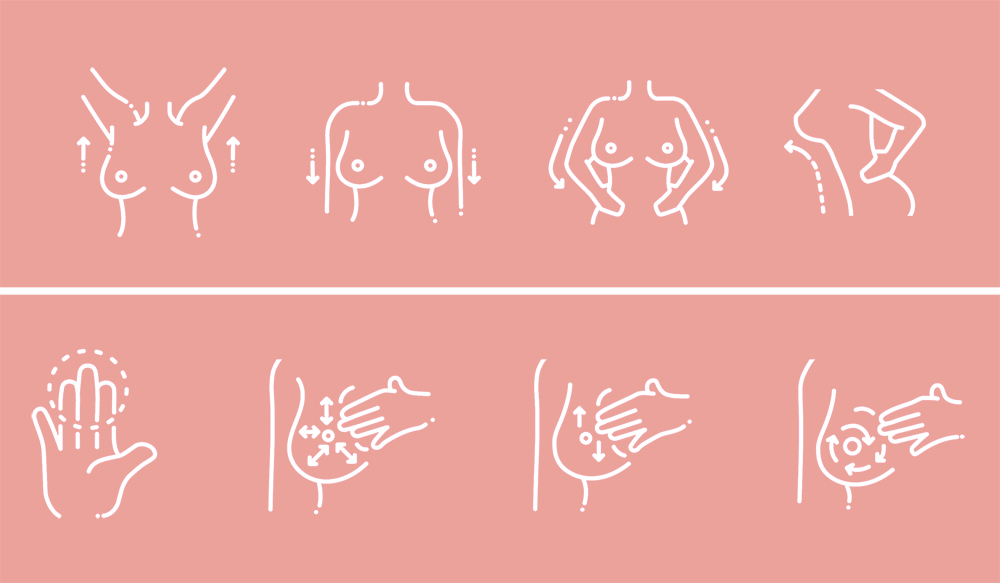How to do a breast self-exam

From crazy hormones to breastfeeding to engorgement and beyond, there’s a lot happening to our girls these days. It’s imperative to not only perform breast self-exams, but to understand how to do it properly and what to look for. Being able to detect any changes in your breasts over time is the first step to catching any malignancies in the early stage. Know when it’s a milk duct or something more serious by following these important steps.
When to do a breast self-exam:
Ideally, perform your breast self-exam when your breasts are not tender or swollen. For premenopausal women, a good time is right after a menstrual period. Pregnant and nursing women can also perform a monthly self-exam. If you are breastfeeding, the best time is right after feeding, when the breasts have as little milk as possible in them. If you’re likely to forget when these times pop up, just remember to #feelitonthefirst.
How to do a breast self-exam:
Step 1:
Begin with a visual examination of your breasts. Sit or stand shirtless and braless in front of a mirror with your arms at your sides and do the following:
- Face forward and look for puckering, dimpling, or changes in size, shape or symmetry.
- Check to see if your nipples are turned in (inverted).
- Inspect your breasts with your hands pressed down on your hips.
- Inspect your breasts with your arms raised overhead and the palms of your hands pressed together.
- Lift your breasts to see if ridges along the bottom are symmetrical.
Step 2:
Use your hands to examine your breasts. Common ways to perform this manual portion include:
- Lying down. Choose a bed or other flat surface to lie down on your back. When lying down, breast tissue spreads out, making it thinner and easier to feel.
- In the shower. Lather your fingers and breasts with soap to help your fingers glide more smoothly over your skin. Make sure to use the pads of your fingers versus the very tips, preferably your three middle fingers. Switch up pressure levels to feel different depths of the breast and try to not rush through it. A methodical technique may also prove helpful in following a pattern for consistency. Try to envision the face of a clock on your breast and examine each section accordingly.
- Make sure to examine both sides.
When to contact your doctor:
Many women find lumps or changes in their breasts, since some of these are normal changes that occur at various points in the menstrual cycle. Finding a change or lump in your breast is not a reason to panic. Breasts often feel different in different places. A firm ridge along the bottom of each breast is normal, for instance. The look and feel of your breasts will change as you age, too. Make an appointment with your doctor if you notice:
- A hard lump or knot near your underarm.
- Changes in the way your breasts look or feel, including thickening or prominent fullness that is different from the surrounding tissue.
- Dimples, puckers, bulges or ridges on the skin of your breast.
- A recent change in a nipple to become pushed in (inverted) instead of sticking out.
- Redness, warmth, swelling or pain.
- Itching, scales, sores or rashes.
- Bloody nipple discharge.
For more info, visit:
http://www.mayoclinic.com/health/breast-exam/MY00743
http://www.cancer.org/cancer/breastcancer/detailedguide/breast-cancer-detection
http://ww5.komen.org/







